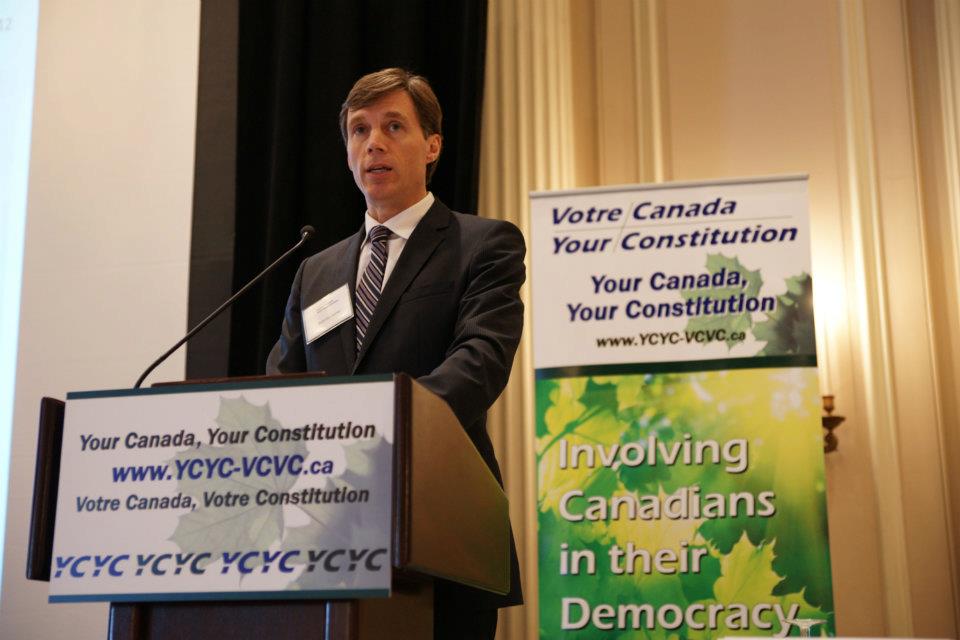It’s membership time. Cultivate Canada’s media. Support rabble.ca. Become a member.
Questions still hang over Canada’s Constitution even though 145 years have passed since it became the founding law of our country and governments, most of them relating to the diversity of Canadians now, and even at that time.
This is not surprising given that the Constitution was drafted by 36 men, 33 of them of British origin and three French, and that it was changed significantly by the British government before its parliament made it the law known as the British North America Act.
And at that time these 36 men, all politicians, were elected by the votes of only white men who owned property or paid significant taxes or rent (men with low incomes, women and minorities were not allowed to vote).
Only about 360,000 wealthy men vote back then, out of total population of about 3.3 million (half of whom were women) in the four provinces that then made up Canada (now known as Ontario, Quebec, Nova Scotia and New Brunswick).
And while about two million of the people in those provinces were of British origin, and about one million of French origin, there were also about 200,000 people of German descent, 30,000 Dutch, 20,000 aboriginal peoples, and 20,000 black people.
Given their backgrounds, it is not surprising that the Constitution these 36 men drafted created a federal government and provincial governments modeled on the British Parliament – a constitutional monarchy. But even with all their similarities, it was far from sure that the four provinces would combine together through the confederation process to form Canada.
In fact, in 1867 the Anti-Confederation Party in Nova Scotia won almost all the seats in the Canadian Parliament and the provincial legislature.
This new government voted to leave Canada but were prohibited from doing so by the British government.
The British Parliament continued to control Canada for decades more, passing 13 more British North America acts that changed our Constitution in many ways (including adding new provinces) from 1867 to 1951.
Canada’s federal Parliament passed seven more similar laws from 1952 to 1981, and then in 1982 along with the British Parliament renamed all of these laws as part of Canada’s Constitution, including the new Charter of Rights and Freedoms, new section 35 that recognized and affirmed the aboriginal treaty rights, new equality rights clause, and new process for amending the Constitution.
However, the 1982 re-naming didn’t change the constitutional structure of Canada’s governments, nor did it resolve questions concerning Quebec’s relationship with the federal government, especially given that Quebec’s legislature did not ratify the 1982 changes.
And while some agreements have followed the 1987-1990 Meech Lake Accord, and 1992 Charlottetown Accord, both of which failed to make constitutional changes, federal-provincial relations overall are still dominated by debates over which government has the power to control various sectors of society.
As well, since 1982 new constitutional concerns, and expectations, have arisen in part because of the growing diversity of Canadians (as people of about 200 ethnic origins now live in Canada, including visible minorities making up 18 per cent of the population), but also as a result of the abuse of powers by prime ministers and premiers.
Canadians have learned much in the past 30 years about how their governments actually work under Canada’s Constitution, which sets out the powers of the Governor General and provincial lieutenant governors (as representatives of the British monarchy) to check the decisions of the Prime Minister and premiers.
Unwritten constitutional rules and practices (known as “conventions”) have developed over the past several decades to restrict these powers to the point that prime ministers and premiers can, essentially, appoint whomever they want to key positions (including law enforcement agencies), call elections and shut down Parliament or a provincial legislature whenever they want, and control politicians in their party and force them to vote in favour of any laws they propose.
A recent survey conducted by Your Canada, Your Constitution found that 65 per cent of Canadians want these powers set out in clear, written rules enforced by the Supreme Court of Canada (as politicians have done to varying degrees in Britain, Australia and New Zealand). Further, 52 per cent of Canadians want Canada to become fully independent by retiring the British monarchy as the head of our governments.
So as we celebrate the national miracle that Canada, through its Constitution, became 145 years ago, it seems that a majority of Canadians also want to reflect on the more independent, democratic and inclusive country Canada could still become.
Duff Conacher is the Spokesperson for Your Canada, Your Constitution, a new national educational foundation.



